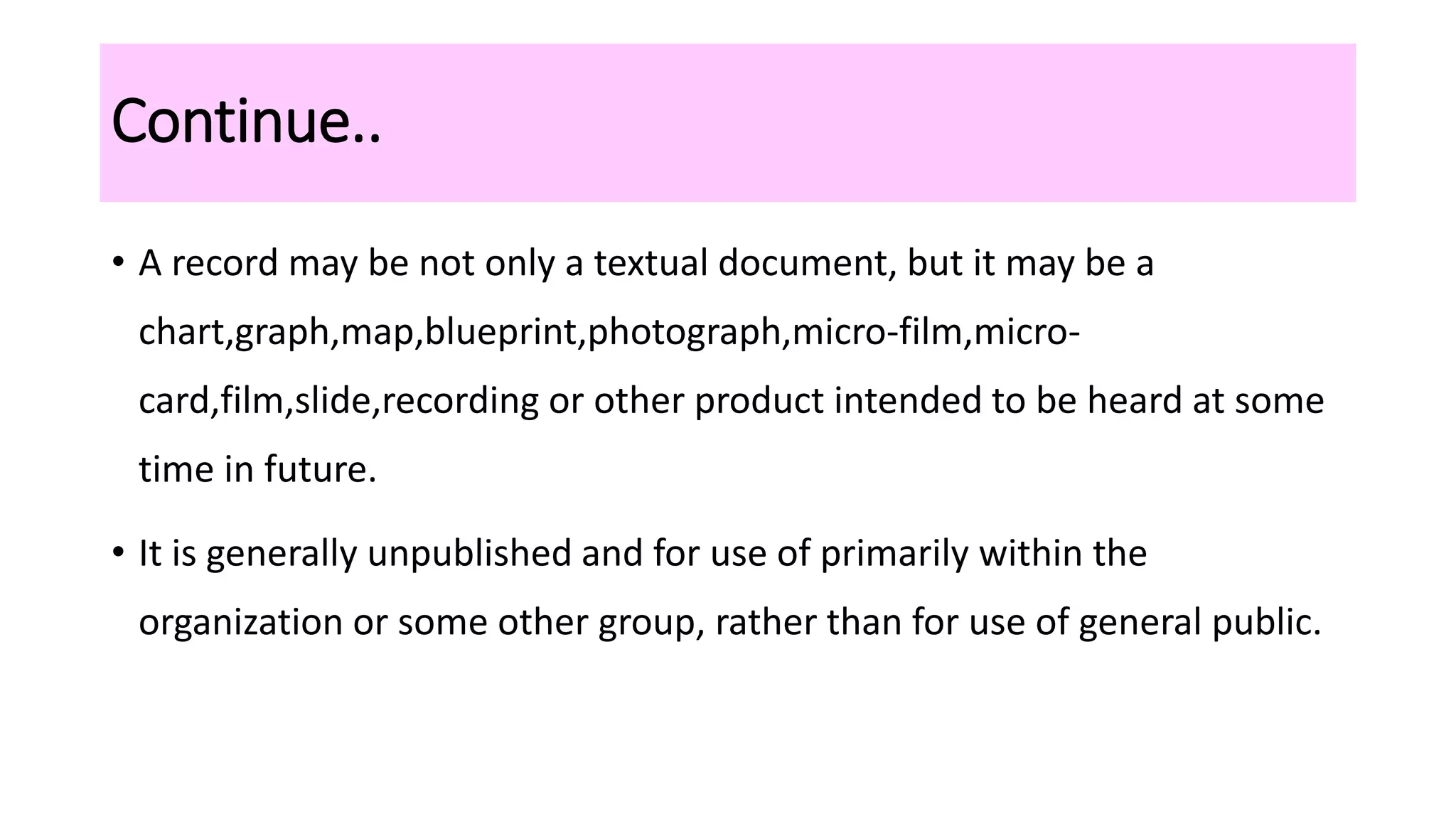This document discusses different types of records used in community organization. It defines a record as a document intended to be used as a working tool by an organization. Records can be textual, charts, photos, etc. and are generally unpublished for internal use. The functions of records are to document past events, identify people/groups, provide instructions, and outline future plans. Community organization records specifically document projects and are used to track progress, share learnings, and support evaluation. The document outlines different types of records like administrative, operating, and teaching records. It also discusses the advantages and disadvantages of process records, which document not just what happened but how and why.











